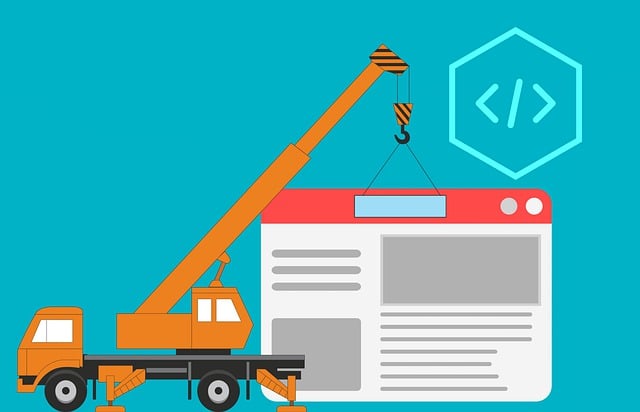Chatbot automation for sales teams leverages AI to enhance customer interactions across multiple channels, offering 24/7 availability, personalized experiences, and reduced response times. By guiding customers through an AI funnel, chatbots gather data while streamlining processes, boosting conversion rates, and allowing human agents to focus on complex scenarios. Implementing this strategy requires a well-planned approach, continuous monitoring, and KPI tracking to maximize success in a multichannel landscape.
In today’s digital age, chatbot automation is transforming multichannel sales interactions. This article delves into the intricacies of how AI-powered chatbots enhance customer engagement and streamline sales processes. We explore the benefits of multichannel interactions, provide a step-by-step guide to implementing chatbots, share best practices for optimal use, and outline key performance indicators for measuring success. Unlocking the potential of chatbot automation for sales teams offers a competitive edge in the market.
- Understanding Chatbot Automation for Sales
- Benefits of Multichannel Sales Interactions
- Implementing Chatbots: A Step-by-Step Guide
- Best Practices for Effective Chatbot Use
- Measuring Success: Key Performance Indicators
Understanding Chatbot Automation for Sales

Chatbot automation for sales teams is transforming the way businesses interact with their customers across multiple channels. By leveraging AI and machine learning, sales chatbots can handle a wide range of tasks, from answering common customer queries to qualifying leads and even setting up appointments. These virtual assistants are designed to provide 24/7 availability, reducing response times and enhancing customer satisfaction.
An ai funnel, where customers progress through a series of automated interactions, allows sales chatbots to gather valuable information and guide prospects through the buyer’s journey. Acting as an ai assistant, these chatbots can personalize conversations based on user inputs, making each interaction more meaningful. This not only improves conversion rates but also frees up human agents to focus on complex sales scenarios, fostering a more efficient and effective sales process.
Benefits of Multichannel Sales Interactions

In today’s digital age, customers interact with brands across multiple channels—from instant messaging apps to social media platforms and voice assistants. This fragmented landscape presents a unique challenge for sales teams, but it also offers significant opportunities. By leveraging chatbot automation for sales teams, businesses can provide consistent, 24/7 support to customers on various channels, ensuring every interaction is seamless and efficient. Chatbot marketing enables personalized engagement at scale, allowing sales representatives to focus on more complex, high-value interactions.
Ecommerce automation powered by sales chatbots streamlines the customer journey, offering quick answers to common queries, product recommendations, and even checkout assistance. This not only enhances customer satisfaction but also increases conversion rates. Moreover, chatbots can collect valuable data about customer preferences and behaviors, providing insights that sales teams can use to refine their strategies. Ultimately, chatbot automation for sales teams transforms the way businesses interact with customers, fostering stronger relationships and driving growth in a multichannel environment.
Implementing Chatbots: A Step-by-Step Guide

Implementing chatbots for your multichannel sales strategy can seem daunting, but with a well-planned approach, it becomes a powerful tool to enhance customer interactions and streamline processes. Here’s a step-by-step guide to get you started:
1. Define Your Objectives: Begin by identifying the specific goals of introducing chatbot automation for your sales teams. Do you aim to improve customer support, reduce response times, or increase lead generation through proactive messaging? Clearly defining objectives will guide your implementation process and help measure success later on. For instance, your primary goal could be to enhance chatbot marketing efforts by providing personalized product recommendations 24/7.
2. Choose the Right Platform: Select a chatbot platform that aligns with your business needs and offers features like natural language processing (NLP) capabilities, integration with existing CRM systems, and customizable workflows. Look for solutions designed for sales and customer service environments to ensure they cater to your industry’s unique requirements. A robust AI funnel built into the chatbot can help guide users through personalized paths based on their interests and interactions.
Best Practices for Effective Chatbot Use

To maximize the benefits of chatbot automation for sales teams, it’s essential to adopt best practices that ensure seamless and effective interactions. Firstly, integrate chatbots across all relevant channels where your sales team engages with customers. Whether it’s through SMS, WhatsApp, or popular messaging apps, a consistent presence will enhance customer experience. Secondly, train chatbots on comprehensive datasets encompassing diverse customer queries to foster accurate responses; regular updates based on sales trends and new product information are crucial for maintaining relevance.
Encourage collaborative relationships between AI automation and human agents. Chatbots should handle routine inquiries, freeing up sales representatives to focus on complex issues that require empathy and nuanced decision-making. This balance ensures optimal utilization of resources, enhancing customer satisfaction with efficient, personalized interactions. Additionally, continually monitor chatbot performance through analytics, identifying areas for improvement and refining the overall sales chatbot experience.
Measuring Success: Key Performance Indicators

Measuring success is paramount when implementing chatbot automation for sales teams. Key Performance Indicators (KPIs) provide a clear picture of how effectively these AI agents are enhancing customer interactions and driving sales. For instance, tracking conversation volume per chatbot can reveal engagement levels, while monitoring average response times demonstrates operational efficiency.
Chatbot marketing’s true value lies in its ability to offload repetitive tasks from human sales representatives, allowing them to focus on complex negotiations and building stronger client relationships. AI sales tools, with their constant learning capabilities, can adapt to customer preferences and provide personalized recommendations, ultimately boosting conversion rates. By analyzing metrics like customer satisfaction scores and sales volume growth over time, businesses can make informed decisions about the strategic deployment of chatbot automation technologies in their multichannel sales operations.
Chatbot automation is transforming multichannel sales interactions, empowering sales teams to enhance customer engagement and drive efficiency. By understanding chatbot capabilities, leveraging the benefits of multichannel communication, and implementing best practices, businesses can effectively harness chatbot automation for significant performance improvements. Measuring success through key performance indicators ensures continuous optimization and a competitive edge in the market. Embracing chatbot automation for sales teams is not just a trend but a strategic necessity for staying ahead in today’s digital landscape.
